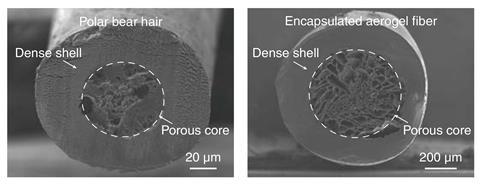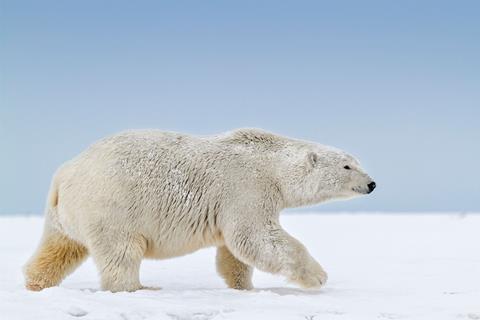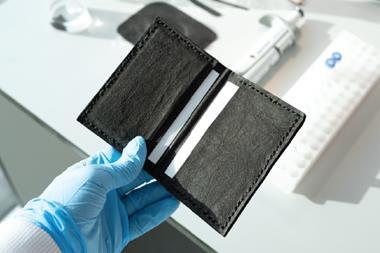A new aerogel fibre, inspired by polar bear fur, can be knitted into insulating garments that are as warm as a down jacket at one-fifth of the thickness. The strong, stretchy material can be dyed and washed without showing signs of degradation.
‘This research marks a significant stride in overcoming aerogel limitations in textiles, facilitating the creation of high-mechanical performance, stretchable, and multifunctional aerogel-based fibres,’ says Shengjie Ling, a materials chemist at ShanghaiTech University, China, who was not involved in the research. ‘The pivotal breakthrough in crafting washable and dyeable stretchable aerogel fibres holds transformative potential for the textile industry.’

Aerogels are synthetic gels made by replacing their liquid component with gas to create a substance that is lightweight with very low thermal conductivity. First pioneered in the 1930s, aerogels have found applications as thickening agents, building materials, energy storage devices and more, but their use in textiles has been limited by processability issues. The most insulating aerogel fibres tend to be too fragile for traditional weaving and cleaning processes.
Now, mimicking the hollow core and dense shell structure of polar bear fur, a team from Zhejiang University, China, has encapsulated aerogel fibres in a thin and stretchy layer of thermoplastic polyurethane to produce a mechanically robust material. Their method involves first freeze-spinning a chitosan polymer solution that is shaped into a continuous fibre. The fibre is then freeze dried and coated in a thermoplastic polyurethane (TPU) solution.

The result is a durable encapsulated aerogel fibre (EAF) with a biomimetic core-shell structure, the internal porosity of which can easily be fine-tuned. The dense encapsulating layer provides strength, as well as protection for the core. EAFs can return to their original length after stretching to 1000% strain, while a single 500μm-wide fibre can lift a 500g weight.
Thanks to the protective encapsulating layer, EAFs are suitable for knitting into remarkably warm textiles. A sweater made from the EAFs was five times thinner than a down jacket but provided the same warmth when tested in a -20°C environment. The garment also showed no degradation after a conventional machine wash cycle, and can be made colourful by incorporating various dyes into the spinning solutions during freeze-spinning.

The EAFs are also promising from environmental viewpoint, says Ling, who notes that the main materials – chitosan and TPU – can be sourced sustainably.
Xuetong Zhang, a materials scientist who holds positions at the Chinese Adacemy of Sciences in Suzhou, China, and at University College London, UK, explains that the main challenges to commercialising the EAFs are to do with how efficiently they can be produced. According to Zhang, the wet spinning rate of aerogel fibres is currently around 20m metres per minute, which is much slower than processes used to produce traditional fibres, which can reach rates of 5000m/min. ‘Additionally, although continuous spinning and batch drying have been established for aerogel fibres, a feasible strategy to bridge the two processes to realise a fully continuous process remains elusive,’ he adds.
Despite these challenges, Zhang believes that the aerogel fibres could one day find use in numerous other applications beyond textiles, including adsorption, separation, optics, energy and biomedical science. ‘The rich nanopores in aerogel fibres can entrap different guest materials, such as molecules, nanoparticles, and functional liquids for many applications,’ he notes.
References
M Wu et al, Science, 2023, DOI: 10.1126/science.adj8013

















No comments yet